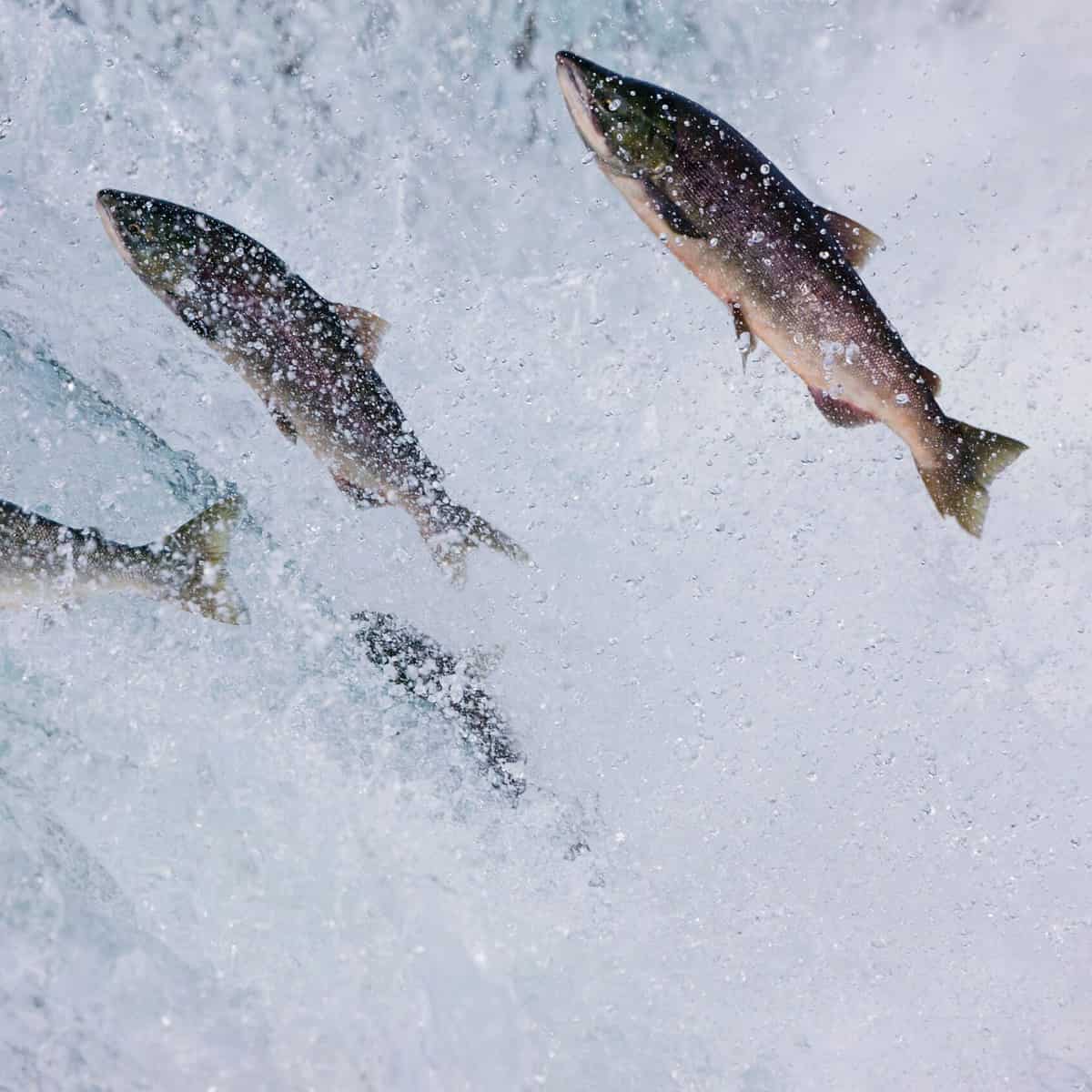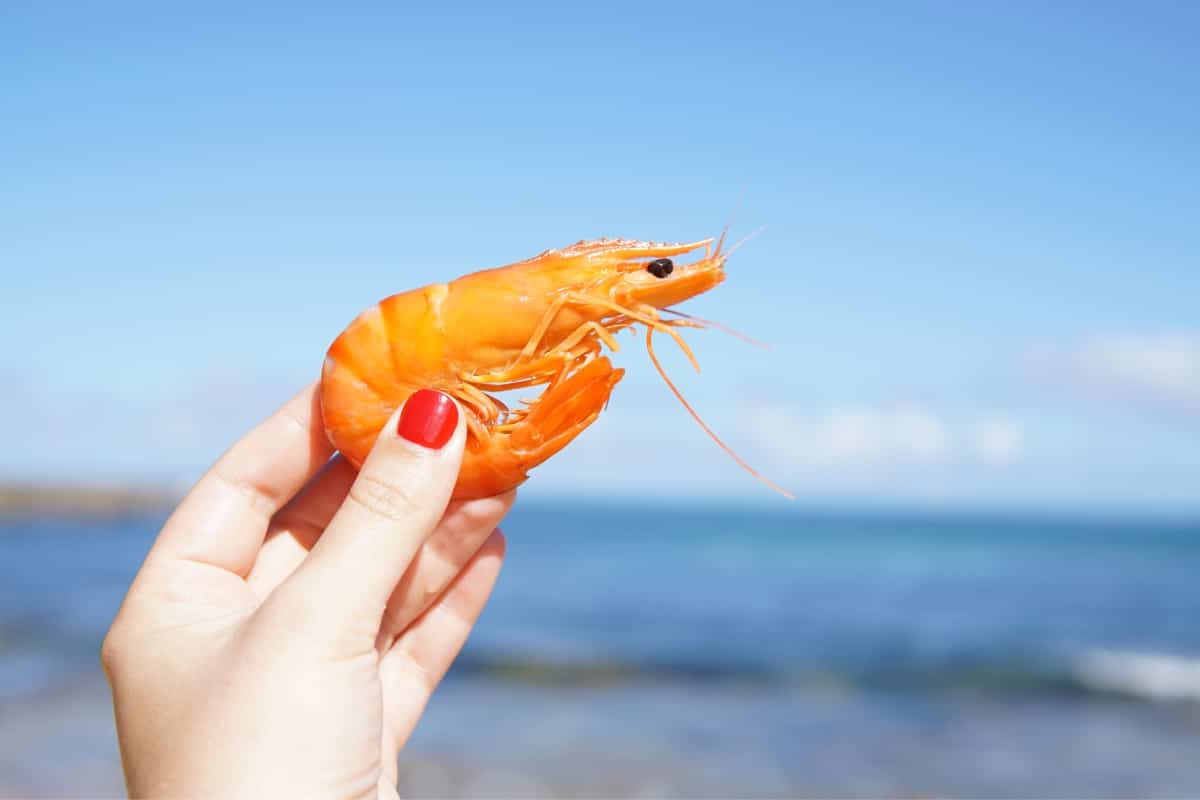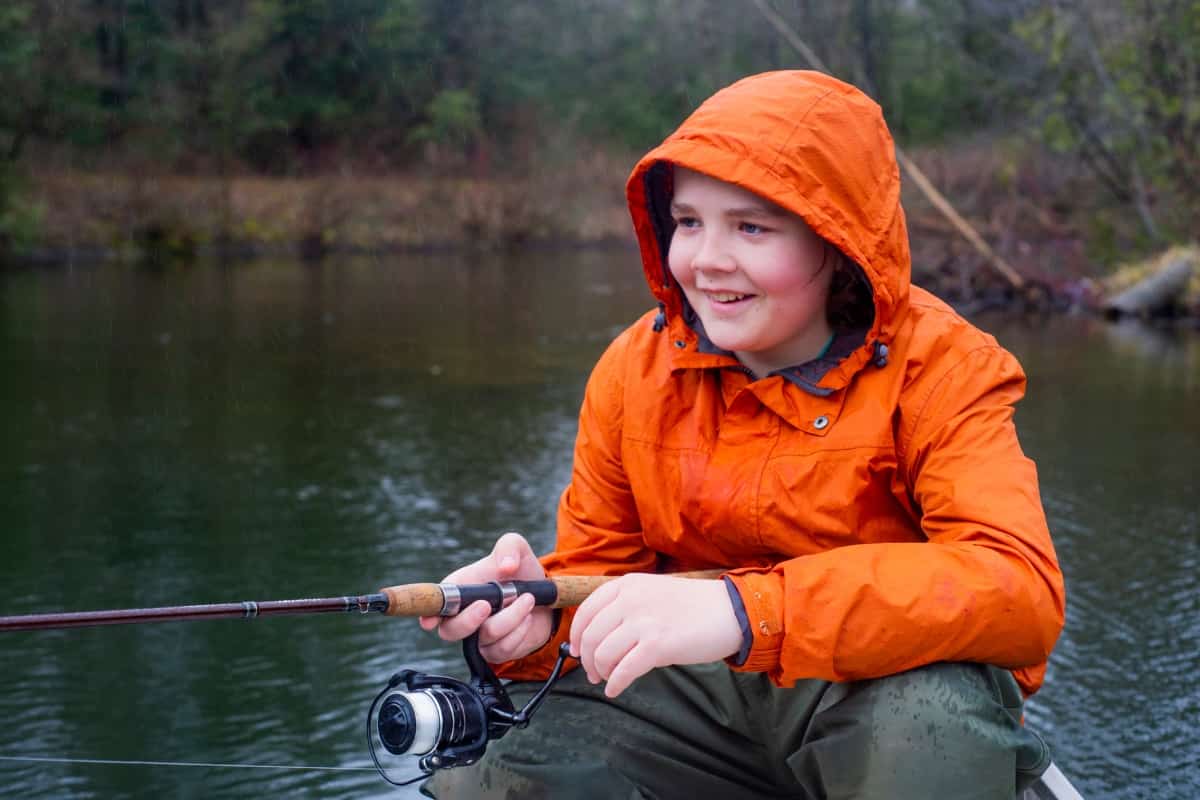If redfish is to salt and brackish water, what bass are to rivers and ponds, then speckle trout are the bream. A species full of piss and vinegar, speckled trout are known to bite off more than they can chew.
An aggressive and tenacious predator, they are one of the most popular fish angled for in saltwater.
Commonly found in estuaries, bayous, and coastal waters, the speckled trout can tolerate a vest degree of differentiation in the salinity levels of the water they inhabit, ranging from Maryland to Mexico’s coast.
Any angler worth their salt is always looking to improve their arsenal for saltwater fishing. Below is a list of the top five speckled trout rigs that can almost guarantee success.
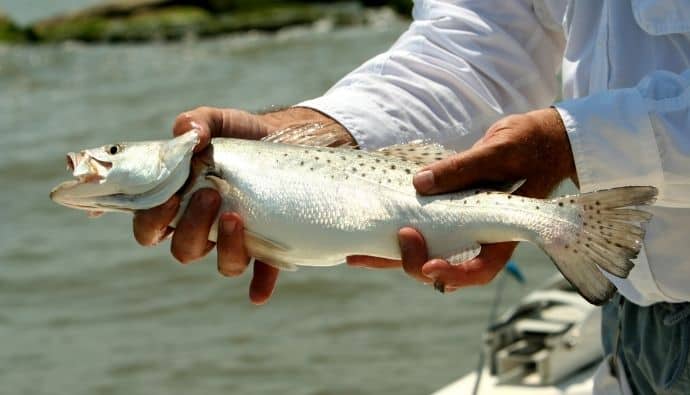
1. Popping Cork
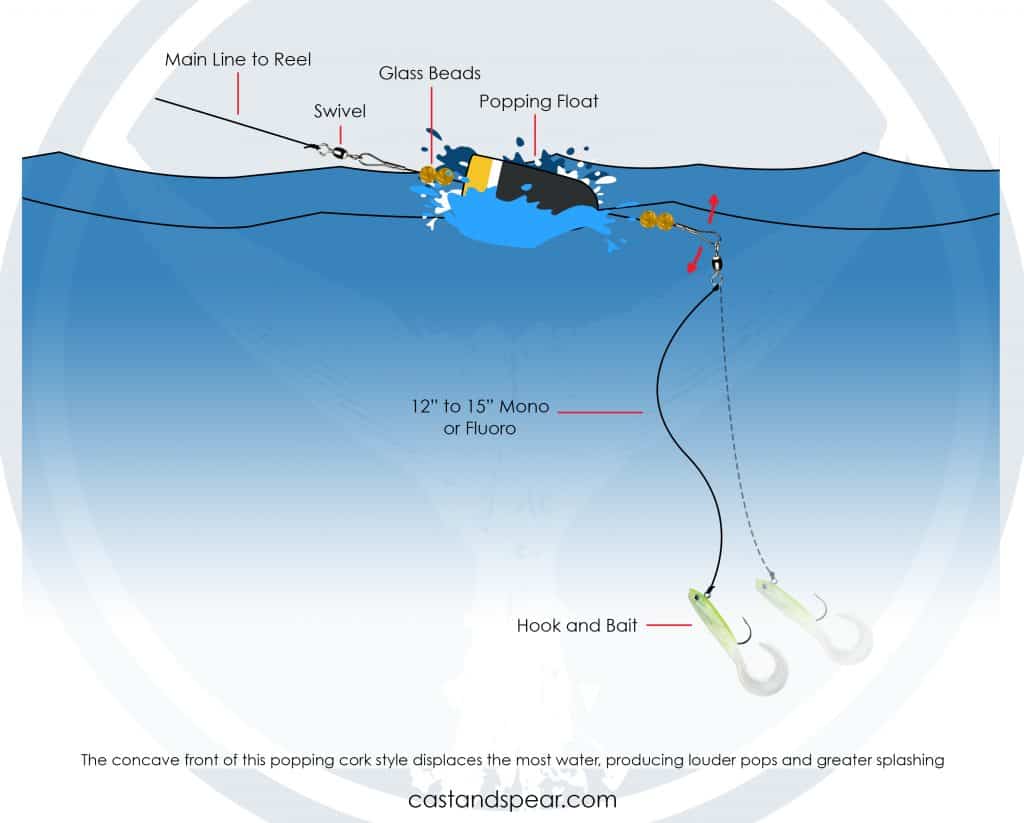
Pros
- Visually and auditory stimulating
- Can utilize artificial and natural bait
- Can move with the current
Cons
- Limited depth
- Lack of fixation on a single point
- Requires a visual confirmation on the cork
I’m most familiar with the popping cork. A rig commonly found to be implemented while trout fishing from a boat, the popping cork sits between 1 to 2 feet above a circle hook separated by a fluorocarbon leader.
The hook is usually baited with shrimp, live or dead, depending on the bait’s availability and the fish’s current preference. However, artificial baits may be implemented on this rig.
Trout are visual predators, and the popping cork allows for a constant movement of the shrimp while creating disturbances on the surface, which rattle and pop, providing auditory stimulation for predatory fish.
When depth is not a factor and water clarity levels vary, the popping cork is the way to go.
2. Free lining
Pros
- Natural appearance
- Moves with the current
- Free-floating in suspension
Cons
- No visual confirmation of strikes
- Free-floating and lack of stability
The free-floating alternative to the popping cork is an incredibly effective way to angle into a current.
Though less visible to the naked eye due to the lack of cork, the lure is still plain to the fish’s view and moves realistically in conjunction with the currents’ ebb and flow.
Any weight added to the line allows the lure or bait to slip further into deeper waters previously inaccessible by cork.
3. Jigs
Pros
- Weighted cast and retrieval
- Often realistic-looking eyes
- Perfect for working the bottom
Cons
- Snag easily on retrieval
Jigs are a commonplace rig for speckled trout fishing.
When angling for the feisty bream of saltwater, it is important to place a lure directly in front of trout with a realistic swim pattern, and appearance and yet still create enough disturbance to garner attraction.
Jigs allow for a descent into the lower levels of speckled trout feeding grounds, closer to where redfish or drums may be found.
Similar to bass, speckled trout will seek out colder water during the peak temperatures of summer days.
This is the perfect time to implement jig heads which allow you to please beat in front of the depth perusing predators waiting for the sun to dissipate.
Though delving into deeper, darker waters, it’s still important to ensure that your lure is as realistic as possible, particularly if artificial lures are on the hook.
One’s chances can be incredibly complimented by selecting bait native to the environment the angler is currently operating in and using this faux plastic on a jig head.
Implementing scent-infused lures can help when the fish are being finicky. Like other rigs, a jig head is usually set up with a fluorocarbon leader and then attached to the mono or braided rest of the line.
Particularly when imitating shrimp with a jig head, it’s important to recognize shrimp swimming patterns.
In this rig, utilizing a steady retrieve with a quick twitch of the rod tip will simulate a shrimp pattern of movement and attract the attention of speckled trout in the vicinity.
4. Twitch Bait
Pros
- Multi-faceted rig
- Can work both shallow and deep water
- Realistic portrayal of baitfish
Cons
- Constantly moving
- Easy to snag if the hook is not buried
Twitch baits are an excellent read to work in the middle of the water column. Effective in bringing in big fish in shallow water, this ring also can work in deep water, suspended above the bottom.
It often mimics a mullet’s swimming pattern, which is a common food source.
Utilizing a soft plastic lure with the hook either runs in a single point through the lure’s nose or runs once through the nose a second time to the body, the twitch bait allows for rapid vibrations that imitate the swimming patterns of baitfish.
This lure can be constructed so that the hook does not poke out of the top and therefore is weedless and avoids snags near oyster beds or rocks.
However, anglers may often leave the hook exposed to increase the percentage of successful hook sets.
Like all previous rigs, the twitch bait is usually run off a fluorocarbon leader attached to a braided line.
5. Topwater
Pros
- Affective in low light conditions
- Wide search area
- Excellent bait for sight hunters
Cons
- Snags easily
- Difficult to cast and retrieve in rough water or wind conditions
Topwater lures can be incredibly effective in low-light conditions. So late afternoon and early morning or days with high cloud cover can be some of the best fishing.
Many large speckled trout have been caught on artificial topwater lures. It’s an excellent search bait. It’s easy to cover large areas quickly with a topwater lure.
Most topwater rigs are equipped with treble hooks; medium-light blanks do not pull out as frequently as their three-point cousin.
Like most rigs previously referenced, a fluorocarbon leader attached to a braided line is usually standard for this kind of rig.
Retrieval for each of these particular rigs varies. However, it’s important to note that the environment, wind and water included, dictate much of the success of these rigs.
For instance, a Topwater rig may be incredibly effective on a calm day amidst several backwaters. However, it would fall short on a windy open water summer day where trout have accumulated in deeper holes.
On a calm day with high action near the surface, a free-floating lure may not be as effective as a popping cork or topwater lure.
Anglers may increase their chances of success by intentionally selecting a rig that will complement their surroundings and by recognizing the distinction between the environment and wind and temperature.
Angling for speckled trout is an incredibly exciting experience for all skill levels. The silvery, gray bullets of the brackish and coastal saltwater are ferocious hunters and maintain your constant voracious appetite.
As an angler, it is the reader’s job to determine what the trout have on the menu for that day and use it to their advantage. With the right rig, the right bait, and a little bit of luck, the reader will find themselves with a full ice chest in no time.





 Facebook
Facebook YouTube
YouTube
